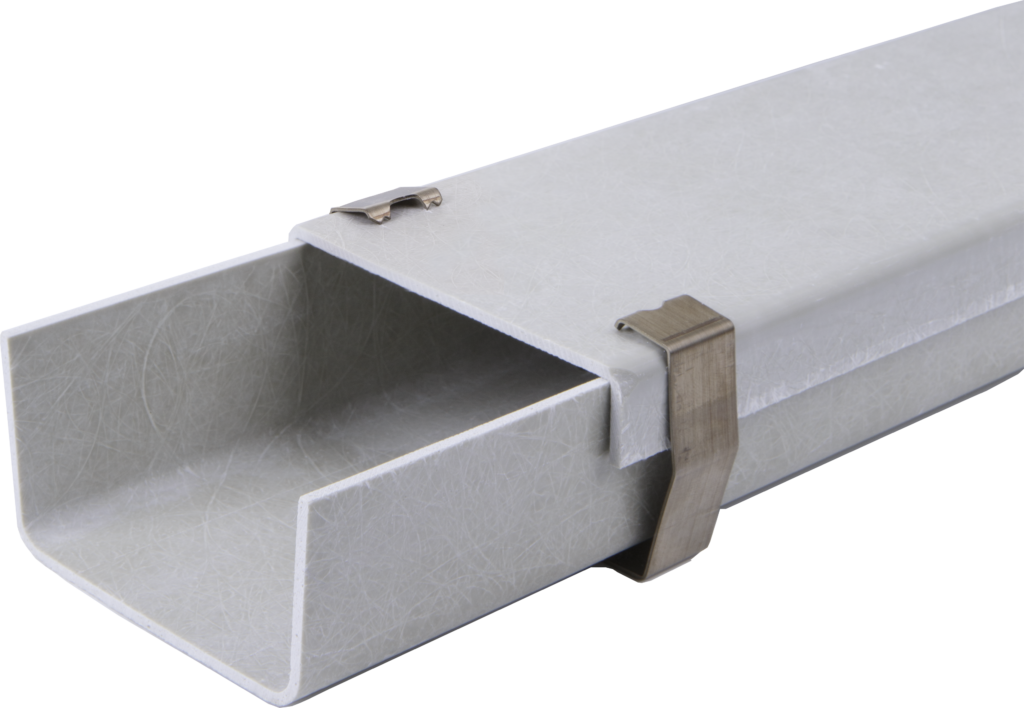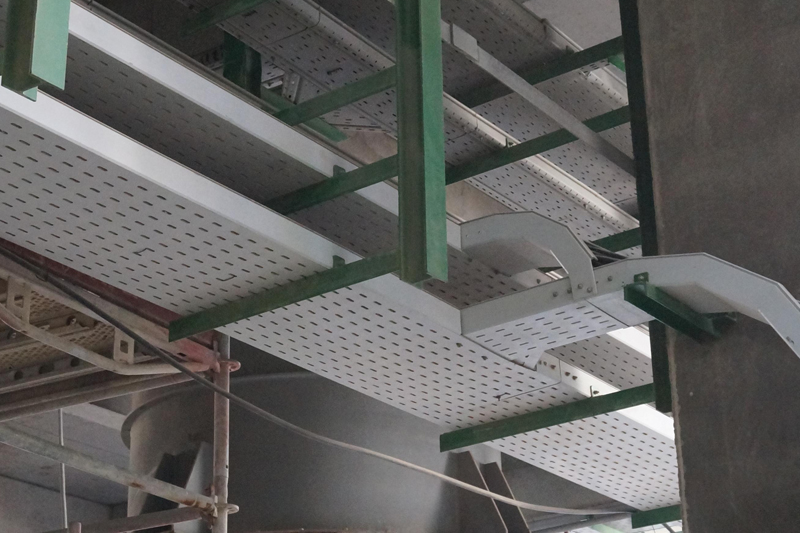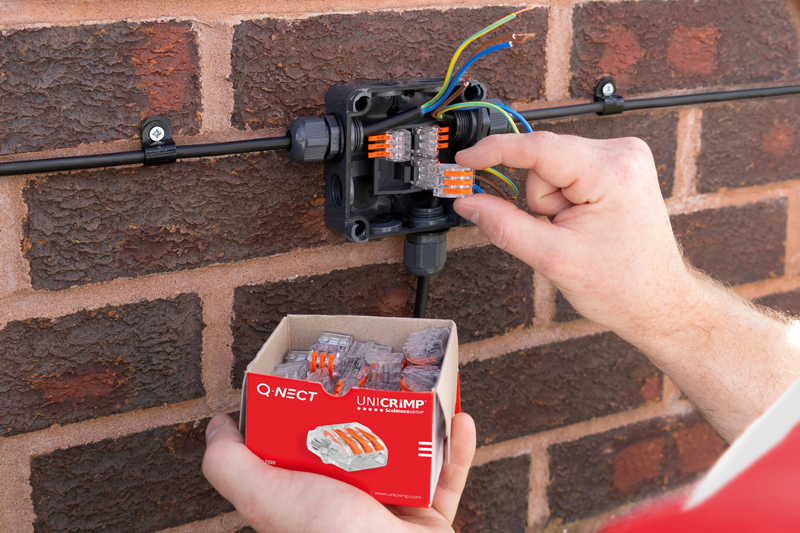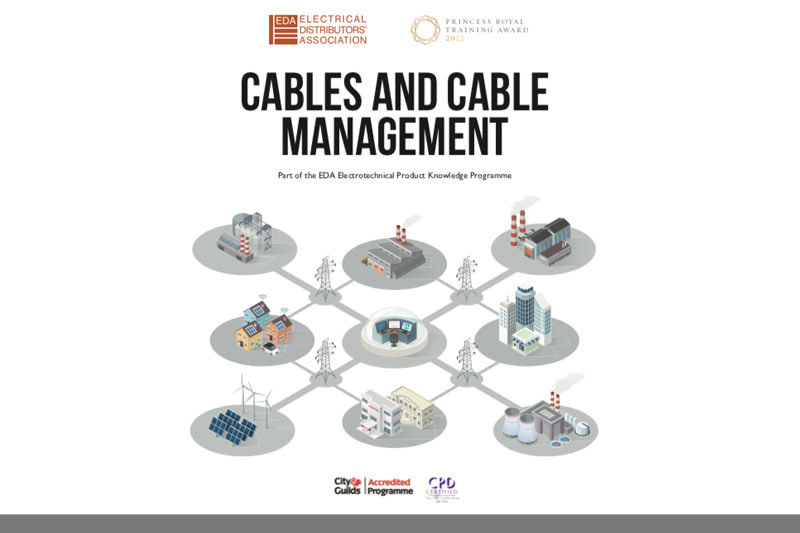Terry Adams, Technical Services Manager at Marshall-Tufflex, outlines how wholesalers can help installers to select the correct cable tray, including considerations such as materials, loading capacities, fire safety requirements and installation methods.
Cable trays are an ideal cable management solution for many applications. In busy commercial environments, cable tray can be used to support and route large quantities of electrical cable in a structured manner. They also provide easy access, allowing cables to be added, removed or re-routed. The perforated construction of cable tray also aids ventilation to help avoid overheating.
There is a wide range of cable tray options available, from smaller, light gauge products ideal for less demanding applications to heavyweight options engineered to support large numbers of cables of increased size and weight. Leading manufacturers will also have an extensive portfolio of components including bends, risers, tee pieces, crosses and lids to meet any installation requirement.
However, there are a number of factors that must be considered to ensure the correct products are selected, especially as this can impact the compliance of the installation with the IET Wiring Regulations.
The right material for the job
The first consideration is the type of cable tray that would be most suitable, and the biggest differentiator is the material. Metal cable tray, typically made from pre-galvanised steel is recommended for interior installations such as data centres, warehouses or commercial retail buildings. Usually available as light, medium or heavy duty gauges, metal cable tray is strong and simple to install. Look for systems that interconnect and bolt together without the need for separate couplers to speed up installation times.
PVC Cable Tray is lightweight and ideally suited for installation into environments where Metal Cable Tray cannot be used due to the corrosive nature of the environment. Suitable applications might be water treatment plants or high humidity environments where a non-corrosive installation is recommended.
For outdoor applications or where the cable management will be exposed to more harsh conditions, Glass Reinforced Polyester (GRP) may be the most suitable. GRP products are commonly used on rail, road, marine, industrial and petrochemical projects. This is because GRP products are highly resistant to corrosion, are UV resistant and effective at temperatures between -80 degrees and 130 degrees. GRP is also a low smoke zero halogen (LS0H) material, has excellent fire performance and withstands contact with many common chemicals. As well as being extremely robust, GRP is considerably lighter than aluminium or steel, making it easy to install and move around site.
Contractors working on transport projects, may also be looking for a supplier who are RISQS verified. RISQS is an independent qualification assessment of a supplier’s products and services.

Loading capacities
It is essential that the specified cable tray can support the weight of the cables installed, especially where heavier armoured cable is being used. It is often the case that cable management systems are overloaded with cables, increasing the risk of failure. To ensure the right product is chosen, installers should calculate the number and weight of the cables using information from the cable manufacturers. This figure can then be compared to the safe working load of the cable tray, again available from the manufacturer, to determine which product is required. Similarly, when providing advice on the support system, it is important to also account for the weight of the cable tray itself.
If the installation is likely to be expanded in the future with additional cables, it is worth recommending that installers select a product that provides a higher loading capacity than is currently required. This will ensure it is future-proofed and reduce the overall costs for end clients over the long term as the cable management will not need to be upgraded later at additional cost.
Fire safety
The correct choice of cable management system plays a crucial role in maintaining the safety of the building in the event of a fire and ensuring compliance with the requirements of the 18th Edition of the Wiring Regulations. Where cable management systems fail due to the heat of a fire, the falling and fallen cables present a serious hazard to those evacuating as well as firefighters moving into and through the building. In fact, there have been a number of cases of firefighters losing their lives when they became caught in the cables and unable to escape.
In response to this hazard, Regulation 521.10.202 of the Wiring Regulations states that all cables should be adequately supported using non-combustible fixings to prevent premature collapse in the event of a fire. This means that cables need to be supported using a material with a melting point of 1000°C for up to 120 minutes.
It is important to note that it requires all cables to be fixed to prevent them falling, rather than just those in escape routes, as was stated in earlier editions of the regulations. Providing they are fixed to a fire-resistant element of the building’s fabric, steel cable trays are an ideal solution to meeting this requirement. The 18th Edition states that: ‘cables installed in or on steel containment systems are deemed to meet the requirements of this regulation’. This is because, depending on the steel’s composition, it has a melting point of between 1200 and 1500°C.
Where products with a lower melting point are used, such as those manufactured from PVC-U or aluminium, the cables must be securely fixed to the structure of the building using fixings that will not disintegrate in fire. BEAMA has produced guidance on this topic which is referenced by the IET Wiring Regulations. In the ‘Prevention of Premature Collapse: A Guide to the Design, Installation and Inspection of Cable Management Systems’ document, BEAMA provides specific guidelines on maximum distances the cables can move in the event of a failure of the containment. Installers should refer to this guidance to ensure the installation is fully compliant.
Those working in wholesaler branches are ideally placed to help installers select products that will meet the requirement of the current project and ensure the installation is fully compliant with the regulations.

Discover more here
Find more industry feature articles here





